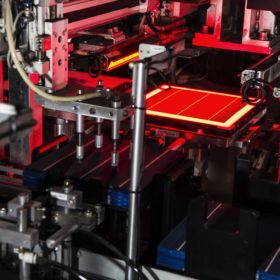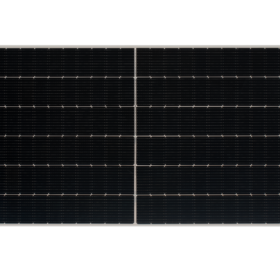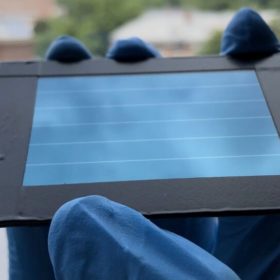REIL seeks 6500 quantities of 330Wp solar modules
Bids are invited from Indian manufacturers to supply polycrystalline solar modules with an efficiency of a minimum 16.75%. Bidding closes on September 3.
Waaree supplies 50 MW solar modules for an American project
The Mumbai-based manufacturer has a 2 GW state-of-the-art solar module manufacturing capacity in Gujarat and is setting up an additional Rs 11-billion modules and cells factory in the state.
Government allows sale, registration of electric vehicles without pre-fitted batteries
Delinking the battery (which accounts for 30-40% of the total vehicle cost) will bring the upfront cost of the electric 2-wheelers (2W) and 3-wheelers (3W) to be lower than internal combustion engine counterparts. The battery could be provided separately by the original equipment manufacturer or the energy service provider.
New 610 W-plus photovoltaic panels
Chinese PV module maker JinkoSolar unveiled its new 610 W Tiger Pro TR solar modules on Saturday at the SNEC PV Power Expo in Shanghai. Furthermore, bifacial module specialist Jolywood launched the Niwa Super module series, which has a power output ranging from 570 W to 615 W and a reported efficiency of 22.1%.
REIL seeks 600,000 multi-crystalline silicon solar cells
August 21 is the deadline to submit bids for supply of 4.50W (4-/5-busbar), 4.60W (5-busbar) and 4.67W (5-busbar) multi-crystalline solar cells. Only Indian manufacturers are eligible to participate.
Government priority is to make Li-ion batteries in India: Transport minister
The government is acquiring lithium mines abroad to ensure raw material availability for electric vehicle battery production. Among other technology alternatives for EVs, it is looking at developing indigenous hydrogen fuel cells with hydrogen derived from biomass.
‘Spontaneous de-doping’ for 17.8%-efficient perovskite mini-module
U.S. scientists have found a new ‘de-doping’ process in perovskite solar cells that could cut production costs and produce better devices. They have used this to fabricate a mini-module with 17.8% efficiency.
IIT researchers consider fate of end-of-life solar modules
Scientists at the Indian Institute of Technology in New Delhi have taken a close look at the potential impact of growing volumes of PV waste and conducted surveys which suggest a lot more work is needed from manufacturers and policymakers to develop management systems for end-of-life PV products.
Strategies to prevent overvoltage-induced inverter disconnections
Australian scientists have identified seven methods to prevent PV losses when overvoltage-induced inverter disconnections occur. The methods include battery storage, reactive power inverters, export limits, distribution static synchronous compensators, the replacement of old conductors in power grids, load reconfiguration, and dynamic voltage restoration.
REIL opens tender for 6500 quantities of 325Wp solar modules
Bids are invited from Indian manufacturers to supply 72-cell, 325Wp polycrystalline solar modules made using domestically manufactured cells. August 20 is the last date to lodge the interest.














